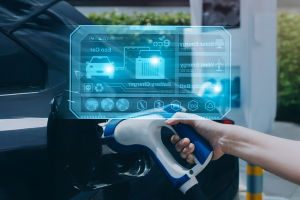Ever wished your car could respond like a trusted co-pilot? Friends, welcome to the era of digital voice assistants—tools transforming commutes into hands-free havens.
As vehicles adopt ever-smarter conversational interfaces, the promise is clear: safer drives, seamless tasks, and a driving experience that feels less like a chore and more like a conversation with a savvy companion.
Early Beginnings
Automakers experimented with in-car voice controls as early as 2004 when automakers first introduced voice-navigation systems. Drivers could change audio tracks, adjust climate settings, and command DVD playback without lifting a finger. Though rudimentary by today's standards, these pioneering systems laid the foundation for the sophisticated in-car assistants now expected as standard in nearly every new model.
Mainstream Momentum
Many consumers are starting to use the in-car conversational assistants. Tasks once reserved for touchscreen taps—such as making phone calls and changing playlists—have migrated to voice commands. Now, ordering dinner, scheduling appointments, or even booking a wash service can occur mid-drive, freeing drivers to focus on the road ahead.
Everyday Uses
From "Call home" to "Play my road-trip playlist," modern voice assistants simplify routine tasks. About 77% of users rely on their in-car assistant for navigation and entertainment, while others book service appointments or order niche deliveries. These hands-free actions not only reduce distractions but also carve minutes of productivity from every journey.
Noise Hurdles
Yet, noisy cabins present a formidable challenge. Speech recognition engines struggle to isolate commands from road rumble, wind, and passenger chatter. In a study, 50% of drivers reported their in-car assistant misheard them. Each misunderstanding forces a return to touchscreens, undercutting the safety and convenience that made voice interfaces so appealing.
Diverse Accents
Global markets introduce further complexity. Regional accents, dialects, and colloquialisms often confound standardized voice engines. Phrases that flow naturally in one locale can warp in another, leading to driver frustration. Addressing this requires robust language models trained on diverse speech patterns, ensuring every user—from East to West—feels understood.
Privacy Concerns
Trust remains fragile. A research indicates 52% of users fear data collection and misuse when interacting with voice assistants. In-car systems often record conversations to improve accuracy, raising questions about where sensitive information—like contact lists or home addresses—may end up. Transparent data policies and on-device processing will be vital to reassuring cautious consumers.
Tech Innovations
Emerging solutions promise breakthroughs. Companies leverage AI-driven noise-reduction technology and source separation to distinguish human speech from engine noise. Advanced beamforming microphones focus on driver voices, while edge-computing chips process commands locally, reducing latency. Together, these enhancements ensure crisp, accurate recognition even on gravel roads or crowded highways.
Ecosystem Integration
Consumers crave continuity. Imagine requesting dinner orders through your home's smart assistant and completing the transaction via your car's assistant en route. Deep integration with smart-home platforms will enable seamless interactions—preheating living rooms, opening garage doors, or adjusting thermostats—all before the car pulls into the driveway. This cross-device harmony elevates voice assistants from novelty to necessity.
Future Possibilities
Tomorrow's voice assistants may entertain as well as assist. Picture playing trivia games with backseat passengers or using your car's AI to read children bedtime stories during a long drive. Beyond practical tasks, voice-driven features could include personalized wellness check-ins or real-time translation during international trips, further blurring the line between driving and living.
User Empowerment
Enhancing adoption demands user education. Automakers and tech firms should craft intuitive tutorials showcasing best practices—like pausing slightly before speaking or using clear keywords. Visual cues on dashboards can guide phrasing, while privacy dashboards empower users to view and delete recorded snippets. By building confidence, manufacturers transform wary drivers into enthusiastic voice champions.
Strategic Roadmap
To cement voice assistants as indispensable, stakeholders must collaborate. Policymakers can set data protection standards, while tech developers refine speech-recognition algorithms for real-world acoustics. Automakers should bundle voice features into enticing packages, avoiding hidden fees. Finally, continuous over-the-air updates will keep assistants fresh, adaptive, and ever-responsive to evolving driver needs.
Conclusion
Lykkers, the journey ahead promises vehicles that listen as attentively as they steer. By conquering noise, accents, and privacy doubts—and weaving assistants into home ecosystems—cars of the near future will transform every commute into a smart, secure, and genuinely hands-free experience. Embrace the voice-driven revolution; the road ahead has never sounded so exciting.


